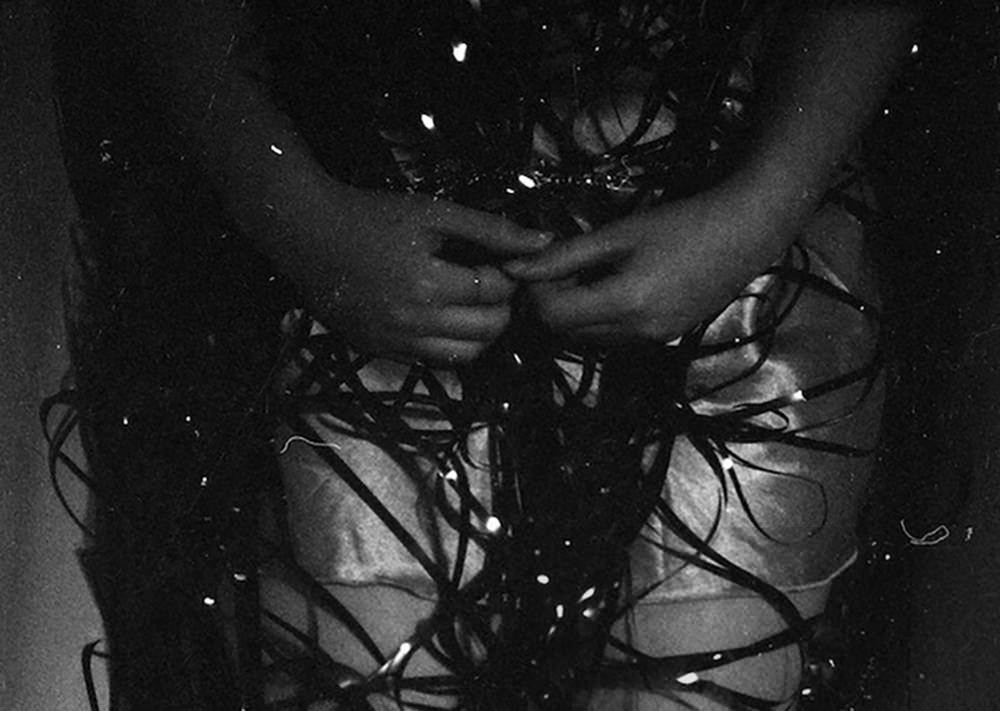Section 3
Remembering my lithium body
Amelia Walker
Abstract
his poem was drafted in the “Articulating the Body” workshop run by Quinn Eades at the 2017 South Australian Gender, Sex and Sexualities Conference. In response to the workshop trigger of the imund/immonde (abject and unworldly), the poem bears witness to re-membered experiences of being on (and getting off) the drug Lithium Carbonate. Following the poem, a research statement details how this re-membering of personal experience constitutes an act of “queer witnessing” (McCormack 2009) that recalls mainstream psychiatry’s historic and ongoing violences, including violences against LGBTQIA+ people (Veltman and Chaimonitz 2014).
Keywords
Queer Witnessing; Recovery Movement; Imund / Immonde; Creative Writing Research; Antipsychiatry
Full text
Remembering a body with hands
that shook & arms
that shook & legs & toes & breath
always shaking, a body
with nerves all plugged up, muddied
by salt
& salt
& salt
in every synapse
and seeping, a body
with a cunt,
a salty, metal cunt
anaesthetised,
amputated,
torn, a body, walking …barely…
one foot
& then the other
& the other
& the other
& the Other
& …
Like a fucking bride, drowned
in white, washed clean,
wiped out
of world & self—but still
a body—shaking—tectonic—waiting—
a body dismembered:
forgotten
but not gone,
a dormant body
that after two years woke
& from its mouth spewed No
& No & No & Oh & No…
& then other words,
for this body found
& recited its legal rights,
then pissed
& pissed
& pissed
all that salt from its stream
& its feet & its hands,
legs, arms, breath,
its cunt. Yes—
this body pissed itself clean
& Now, this body,
it is fresh
water flowing. But still, this body,
it remembers, is remembered. It knows
there are yet Other bodies
being muddied, stuffed, salted
—bodies that must be
remembered.
ERA RESEARCH STATEMENT
RESEARCH BACKGROUND
Drafted in the workshop “Art(i)culating the Body” (Eades 2017), this poem enacts écriture matiére (writing the bod(il)y) (Eades 2015, 30). Écriture matiére expands écriture feminine (writing the feminine) (Cixous 1976, 882) to include greater bodily diversity (Eades 2015, 30). The trigger for this poem was “imund”/”immonde ”—the unclean, abject and/or unworldly (Cixous & Sellers 1994, 238–40). I wrote about being on lithium carbonate in my late teens—a treatment my present doctor deems inappropriate, for I have since lived twelve years un-medicated, without remission. The poem re-members—restores membership to (Crowley 2001)—a body on lithium, and rejecting lithium.
RESEARCH CONTRIBUTION
Through écriture matiére (Eades 2015, 30), this poem contributes a “queer witnessing”—“embodied remembering” towards diversified possibilities for be(long)ing (McCormack 2009, 1)—and “queer writing”: radical “denaturalizing” of “categories or norms” (Baker & Thompson 2015, 9–10). The poem links norms of “sanity”/“insanity” with suppression of queer sexuality though “a salty, metal cunt / anaesthetised”. The poem also contributes to the “recovery movement” (Davidson 2016) by witnessing a body that “woke / & from its mouth spewed No”. Recovery foregrounds “lessons learned from the life experiences of these people [diagnosed with mental illnesses] as they found their way—often without assistance from, and in some cases despite, mental health services” (Davidson 2016, 1091).
RESEARCH SIGNIFICANCE
The phrase “salty, metal cunt” remembers how my vaginal secretions tasted on lithium—of cold chemicals as opposed to human flesh. The poem thus describes abjection, yet “refigures the abject” as something “engaged with… even embraced” (Baker & Thompson 2015, 9–10) when the body “pisse[s] itself clean”. This paradoxical line evokes the “unclean with joy” (Cixous and Sellers 1994, 205) imund as reclaiming “the best part of ourselves” (239). The poem thereby witnesses a recovery of mind and/as body, and sexuality. Implicitly, it recalls mainstream psychiatry’s historic and ongoing violences against LGBTQIA+ people (Veltman and Chaimowitz 2014), signalling intersectional links between LGBTQIA+ advocacy and the recovery movement.
WORKS CITED
Baker, D. J. and Thompson, J.D. (2015). Introduction: Queer writing–setting the scene. TEXT Special Issue 31: Beyond Australia Queer, 31(1): n.p. Viewed 23 September 2017. http://www.textjournal.com.au/speciss/issue31/Baker&Thompson.pdf
Cixous, H. (1976). The Laugh of the Medusa. Signs, 1(4): 875–93.
Cixous, H. and Sellers, S. (1994). The Hélène Cixous Reader. New York: Routledge.
Crowley, V. (2001). Acts of Memory and Imagination: Reflections on Women’s Suffrage and the Centenary Celebrations of Suffrage in South Australia in 1994. Australian Feminist Studies, 16(25): 225–240.
Davidson, L. (2016). The Recovery Movement: Implications For Mental Health Care And Enabling People To Participate Fully In Life. Health Affairs, 36(6): 1091–1097.
Eades, Q. (2015). all the beginnings: a queer autobiography of the body. North Melbourne: Tantanoola.
Eades, Q. (2017.) Art(i)culating the Body: Writing Workshop with Quinn Eades, July 12, 2017. University of South Australia.
McCormack, D. (2009). Queer witnessing: intersubjective storytelling in selected novels of Shani Mootoo, Tahar Ben Jelloun and Ann-Marie MacDonald. PhD dissertation. University of Leeds.
Veltman, A. and Chaimowitz, G. (2014). Mental Health Care for People Who Identify as Lesbian, Gay, Bisexual, Transgender, and (or) Queer. Canadian Journal of Psychiatry, 59(11): 1–7.
This work is licensed under a Creative Commons Attribution-NonCommercial-NoDerivs 3.0 Australia License.
ISSN: 2202-2546
© Copyright 2015 La Trobe University. All rights reserved.
CRICOS Provider Code: VIC 00115M, NSW 02218K

